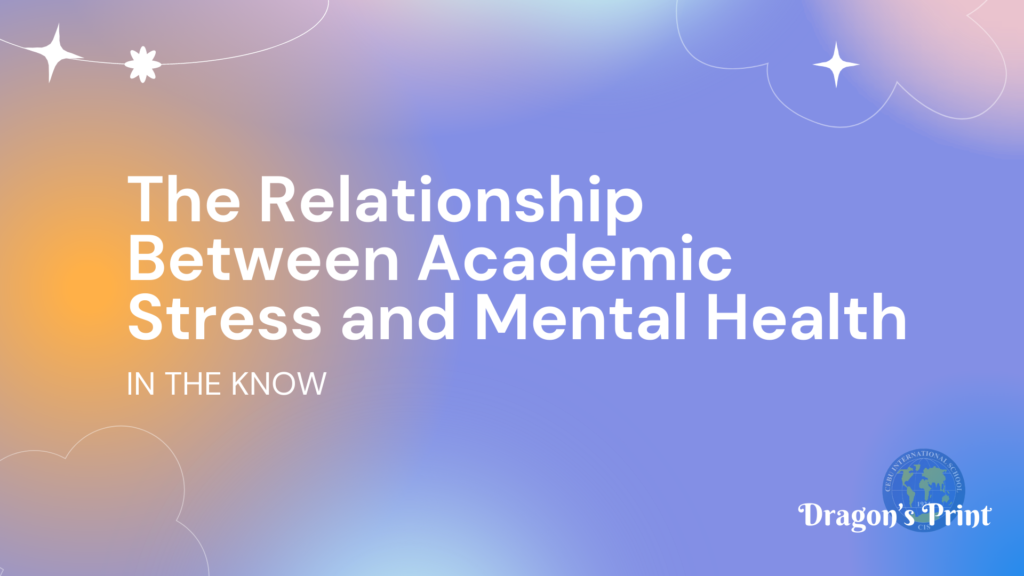
Principal’s Corner
by Mr. Andrew Powell, EY-G12 Principal
As we prepare for a significant transition returning to campus next week, I thought it timely to underscore the importance of the ways in which we will prepare for our community to continue to thrive while navigating the upcoming change.
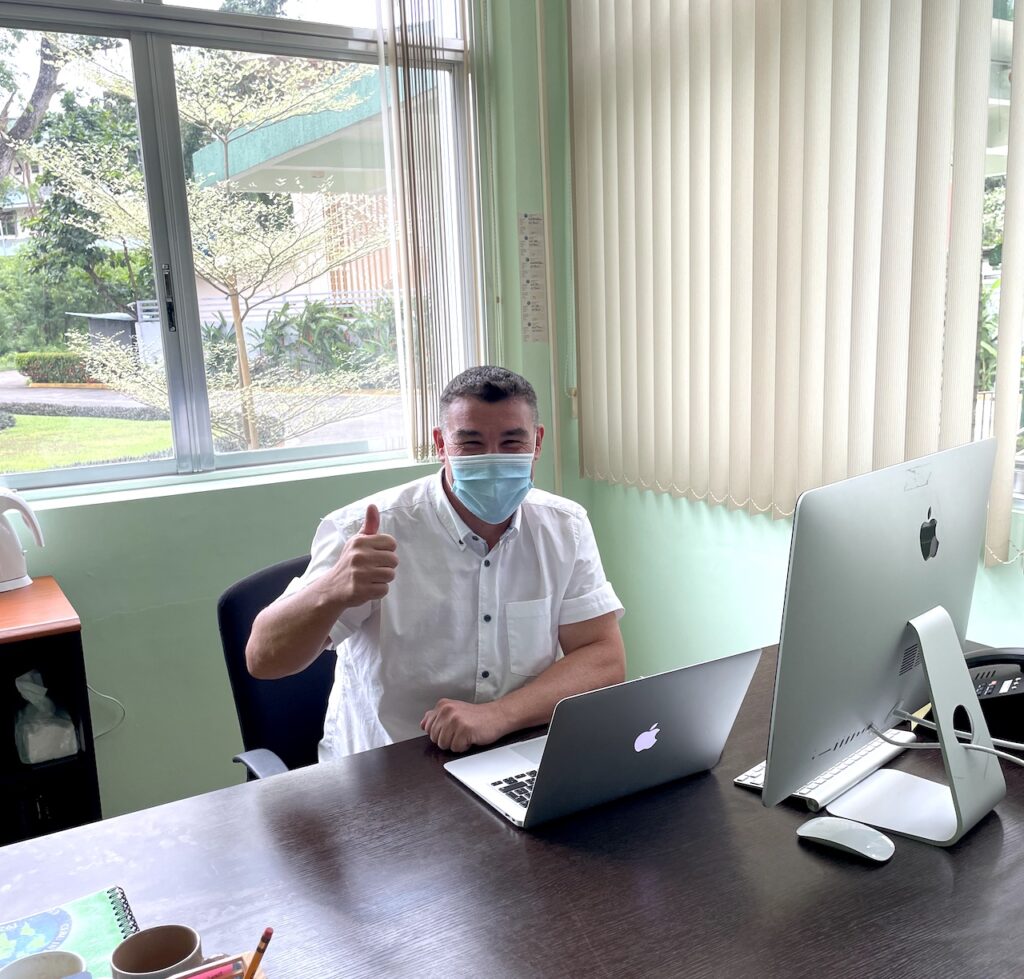
While many of our students will be excited about the prospect of a return to campus, we are mindful that some will benefit from ongoing encouragement and the space to talk and seek reassurance. Throughout the pandemic we have encouraged our students to grow, be adaptive and develop their resilience. This continues. We look forward to greeting our students with a smile and continue to stress the importance of empathy, relationships, and social-emotional development. Our teachers are committed to providing a welcoming, safe, and supportive learning environment.
Our students have been craving personal connection. Having a connected community is important for our wellbeing. It will be important that our teachers and students tend to their personal and virtual relationships in a way that cultivates a sense of a shared experience. We want all of our learners to feel valued through the way in which they interact with each other so that they feel secure and appropriately adjusted to a new but familiar learning environment. Our teachers are cognizant that this transition comes with a degree of uncertainty and will look to empower students through their connections with each other.
As a school we continue to seek creative ways to engage our community and reimagine education. The next phase of our teaching and learning involves a hybrid experience in which students at school and at home will be engaged concurrently in their learning journeys. We view this as a time of excitement and new possibilities. We have proudly embraced innovation within the school and continue to be driven by the latest research on High Impact Teaching Strategies. Our teachers are passionate about ensuring that all students succeed.
We’ve learned that a thriving school community is anchored by a commitment to ongoing learning and constant reflection. This is a process that involves all stakeholders. We look forward to working with you over the coming weeks and continue to be committed to cultivating a valuable school experience for our students.
Kinder/Grade 1 Class
by Ms. Tara Bersabal-Alagao, Kinder/Grade 1 Teacher
 Homes
Homes
For the past five weeks, the Kinder and Grade 1 students have been inquiring about homes. First, we looked into the different kinds of houses around the world and learned that there are different types of houses. Some examples are apartments, mobile homes, cabins, houseboats and farmhouses. We shared what our perfect house would look like if we were to build a house. We learned about opinion writing. Opinion is what you think or how you feel about something. We learned the different parts of opinion writing using the OREO organizer. Then, we turned the picture of our perfect house into writing. We chose what color we would like to have for our perfect house and gave our opinion 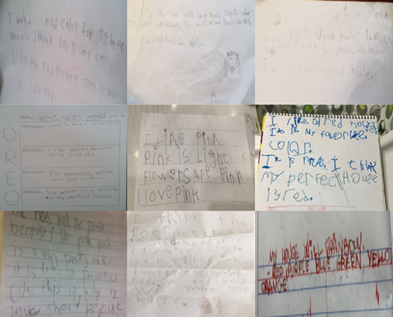 and explained the reason why we chose that color.
and explained the reason why we chose that color.
In this unit, we also learned about the different factors that we need to consider when making decisions in building and designing a house. We pretended to be architects and helped different families in deciding the house that would fit their needs. Some of the things that we need to consider are the climate, geography, available resources and culture.

Through stories and discussions, the Kinder and Grade 1 students have learned the reasons why people need a home. They also discovered the difference between a house and home. A house is a building but a home is a place where we live with our family and where we feel safe, comfortable and happy.
Grade 9: Design
by Ms. Gerri Ancajas Jumao-as, Design Teacher
The Grade 9 Design class are currently busy exploring techniques and developing skills related to textile through a series of formative exercises.
Repairing a tear exercise: This exercise involves mending of cuts or tears in clothes.
Here are some students’ works.
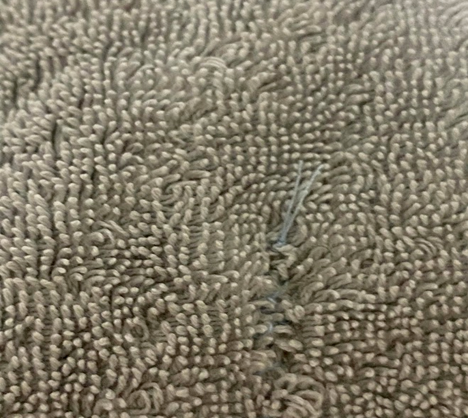
I sewed on the towel. I used a striking color for the thread. I think it would be better if my sewing was a little more precise and consistent. – Yeseul
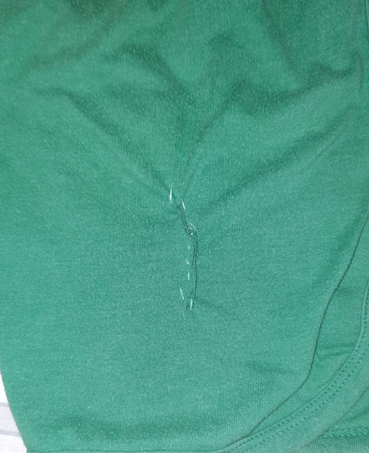
I think my ending needs a bit more practice, it was ok but I need to look for more techniques on that. Other than that I think I did pretty well; maybe I could make the stitches a little closer to each other but other than these two I’m not sure on how I can improve. – Noam
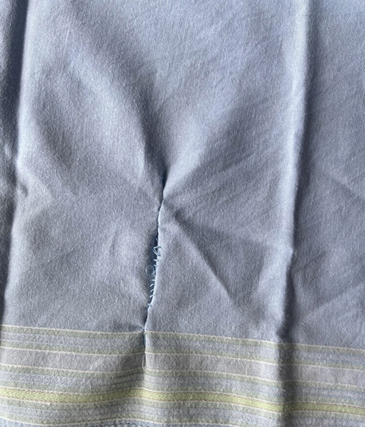
I think my sewing wasn’t that bad, especially that it was my first time doing it. I think I need to really practice and improve my sewing. I also think that I need help from other people who actually know how to sew also and ask for some tips. Overall I think it was ok since it was my first time sewing and repairing a tear. – Aaryan
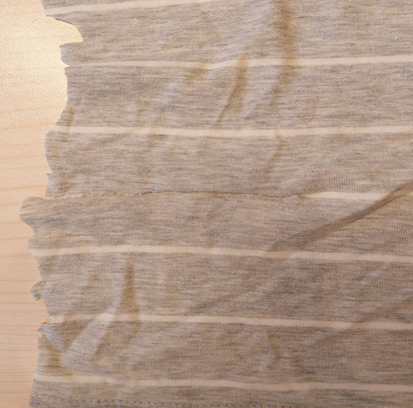
I used the stitch called “Blanket Stitch”. I found it easy to do; it was not really complicated because I used this stitch mostly when mending rips or small holes. Most of the stitches weren’t really visible from the outside, which was the goal of the work. Thus, I think I did a decent job on this one. – Annika
Patching a hole exercise: This exercise involves using a patch of cloth to repair a clothing that has a hole in it, in order to protect it from further damage or to decorate clothing.
Here are some students’ works.
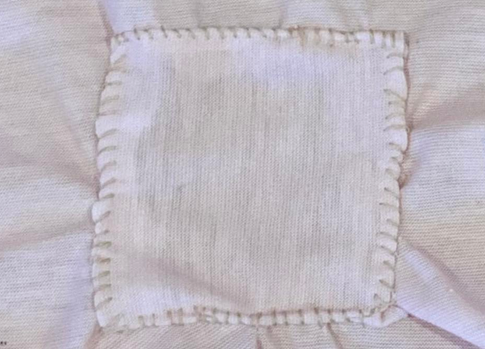
Despite the fact that the whip stitch is easy to do, it was a bit challenging for me to use this method in joining the patch and the cloth. To improve, I should press the fabric and the seams properly as I sew to prevent the cloth from scrunching together, and paying close attention while doing so in order to make the stitches as straight as possible. – Fiana
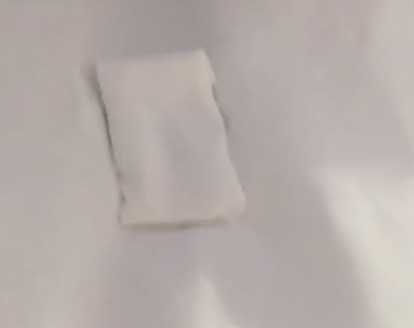
I am pretty happy with what I did although, the piece of fabric I placed over the hole could have been a little bit tighter for it to not protrude so much. Next time I will make sure to stretch it out beforehand to create a better looking result. – Adam
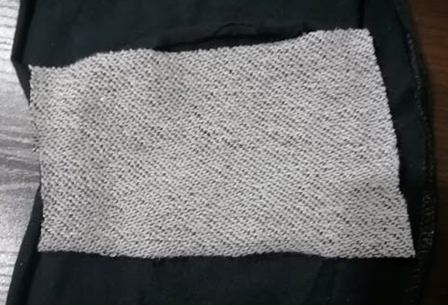
During this task, I improved my precision and patience skills. This assignment challenged me to be extremely exact and patient. There’s a considerable deal of both. In order to get great results, I needed to establish a balance between these two abilities. – Roland
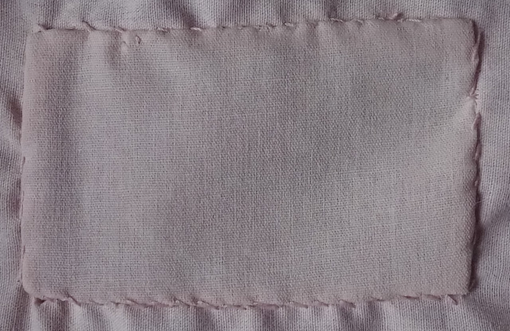
I think I did well with the sewing — not my best work but it was good enough as an amateur rookie in this field of work. Though I feel that way, I do think I could’ve done a better job in achieving the task this first time. In retrospect, I feel I struggled in certain parts of doing the stitch which I think could’ve been quickly overcome (but it seemed I couldn’t then). – Gabrielle
Adding buttons exercise: This exercise involves sewing buttons to clothes as a fastener or decoration.
Here are some students’ works.

I think I did well on my sewing activity, the button was secure, and did not come off. I will improve my sewing skills by finding a more quick way to locate the holes where my needle is supposed to go through. – Elijah

I think my sewing was kind of good. I think I do need some improvement on how I handle the needle and I also need more practice to get used to sewing. Though this is the first time I put on a button, I did relatively well. Some parts of my stitches were also a little bit loose and that’s one thing I could improve. – Aaryan
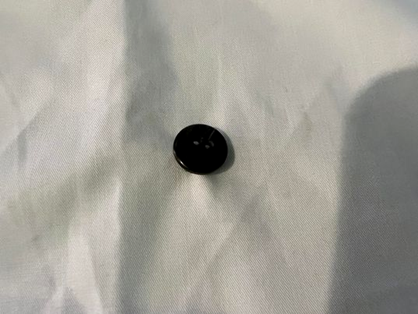
Overall I believe my performance for this task was pretty decent. To improve I want to not crease my fabric and do it more accurately so that there is space in between the button and the fabric because if the fabric is too close to the button the person will not be able to move the button. – Sengo

I think overall I could’ve done a better job even if the product was functional and overall because it is pretty tidy. I think that some of the strategies to make improvements are to go even slower to really make sure I did every step well because the process is more important than the final product and the product is just what comes out of a well thought and well executed process. – Miguel
Weaving exercise: This exercise involves two sets of yarns or threads that are interlaced at right angles to form a fabric or cloth.
Here are some students’ works.
I think that I did ok for my first time, definitely need some improvement but overall for me I think it’s ok. – Sengo


Middle & High School Drama
by Ms. Stefanny Hermias, Drama Teacher
Grade 6 and 7 Movement: Pantomime
In our Unit 1, Grade 6 and 7 students are introduced to the concept of movement being an effective use of communication. Students physically created objects, and portrayed scenes through pantomimic technique. Students explored the basic principles of pantomime and used exaggerated movement to evoke emotion. Students also used deliberate and motivated movement to explore thoughts and feelings, which will prepare them to create a physical life for a character. In their summative assessment, they recorded a video of themselves pantomiming activities based on trending issues, such as: Covid 19/pandemic, typhoon Odette, remote learning etc. Here are some summative video responses from the Grade 6/7 Drama Da Vinci class.
Please click each student’s name to watch their ‘pantomime’ video.
Spoken Word Poetry
During our ACL (Adverse Circumstance Learning) program, Grade 6 and 7 Drama students explored the world of “Poetry”. Students had the opportunity to watch several videos on spoken poetry which included some performances from last year’s students in Drama. They have been provided with ready-made poetry materials that they could use for their individual pre-assessment tasks.
Please click here to watch some video snippets of the Grade 6/7 poetry pre-assessment performances.
Student reflections:
I learned that I could speak fast, I usually speak slow so I didn’t really know I could speak fast without getting my tongue twisted. One thing that got in the way of my progress was that I would often procrastinate on practicing and recording during the week. This was because I didn’t want to record a video and talk out loud. But as the week was ending and the number of assignments decreased, I finally got around to practicing and recording a video. A big challenge I faced was taking notes about the poem, since this was my first time doing this I wasn’t exactly sure what to do. However, I was able to write down what I thought would fit and be relevant to the poem. I find spoken word poetry fun. I enjoyed decrypting the meaning behind my chosen poem, although I wasn’t sure what to do at first. I wasn’t that avid about shooting a video though, this is due to the fact that I usually work at night since that’s morning time in Cebu. If I were to re-do the spoken poetry again I would have tried to plan out my movements, since they were mostly random and only made a little sense when tied to the poem. Nino V.
I think when doing this project I could do better but I think I had a hard time memorizing because my tongue got twisted in a way. Another thing is that I was able to speak loudly and I was able to memorize most of it, especially the last part. I liked the poem Iread. It really satisfied me.It was fun too in a way! Arianna P.
Throughout this project, I’ve learned more about how poetry can help people realize their own portions of life, and how it evolves and develops with that realization. Another factor could be the simplicity in which I was able to articulate the section of the statement and position the emotions throughout the performance. Trying to find distinct emotions to communicate within the different lines that would correlate to the mood it conveyed was a problem that occurred during the performance process. The most difficult parts were trying to incorporate hand gestures and facial expressions as I was mostly focused on the emotions and how the poem was presented within words and feelings, but not so much on the hand gestures and facial expressions, which made it difficult to fully represent the poem with full on emotional responses. I thoroughly enjoyed reading through the poem and experiencing the rush of sensations I felt when I first read the lines, reliving those emotions while understanding the passage and the poem’s significance and depth. Despite the fact that it was required, I despised the way I had to present.To emphasize the performance and give it more passion, I’d add more facial expressions and hand motions. M S.
Grade 8 & 9 Drama
Unit 1: Monologues
Grade 8 and 9 students started their elective class in Drama this second semester. During our ACL program in January, students were able to demonstrate their ability to memorize and improve their character development skills by performing a monologue. They were provided with 15 ready- made monologue materials to choose from for their pre- assessment tasks.
As we resumed our regular remote learning, we explored the types of monologue and its features as well as ways on how to write a monologue. In our formative assessments, students were introduced to a monologue which came from the Big Bad Wolf in the tale of Little Red Riding Hood. After reading and performing the monologue, they then had the opportunity to write their own monologue for a character in a story and delivered it in class. You may find some of the recorded videos of “The Wolf’s Woes” Grade 8/9 own version monologue below.
Currently, Grade 8/9 Drama students are in the process of their summative assessments. One of the tasks is for them to be able to select one character from a published play or movie and find a 3-5 minute monologue that best represents that character. Stay tuned for their upcoming monologue performances that will be showcased soon.

College/Careers Counselor Corner
by Ms. Jenny Basa, College/Careers Counselor
Question of the Week:
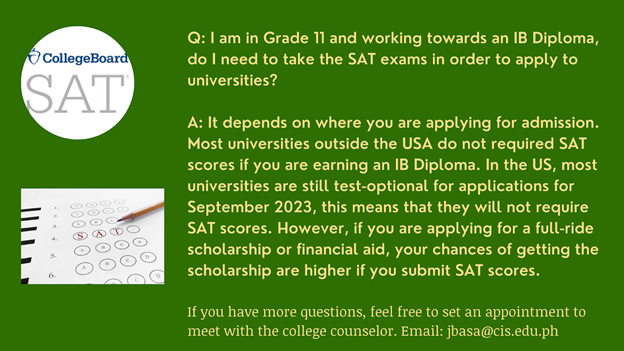
Upcoming Virtual Events and FAIRS: (students & parents are welcome)
DATE
March 17
Thursday
7:30PM Eastern time
Link to register
Investing in Your Future: The Return on College
This interactive Q&A will:
- Explain the nuances of college ROI (Return on Investment) as well as its limitations
- Explore key findings of the Georgetown Center on Education and the Workforce report which ranked 4,500 colleges and universities by ROI
- Discuss how the U.S. Department of Education’s College Scorecard can help families make fiscally responsible decisions
March 24
Thursday
4:00pm
Link to register
Do Facts Mean Truth?
In a world overwhelmed by misinformation and falsehood, does knowing the facts always present truth and reality? This talk will introduce students to fact-checking through some fun examples and point out that our own biases play a part in our understanding of truth and reality. (Webinar by Hong Kong Baptist University, with a short presentation about admissions at the end of the webinar)
March 25 & 26
1:00 – 7:00PM
Study Abroad Virtual Fair

SAT Update
The SAT exam for March 12, 2022 will push through.

For safety requirements and guidelines, please refer to https://go.cis.edu.ph/SAT-guidelines
Dragon’s Print
As students, we all know that the feeling of academic stress is inevitable. Even if you are a stellar student, it is extremely difficult to stay stress-free, especially as you progress through higher grade levels. Read more about academic stress and mental health concerns at https://dragonsprint.cis.edu.
